|
|
General: PAPA FRANCESCO PARLA DI MARIA MADDALENA
Scegli un’altra bacheca |
|
Rispondi |
Messaggio 1 di 33 di questo argomento |
|
|
|
|
|
Rispondi |
Messaggio 19 di 33 di questo argomento |
|
 “Maria Maddalena, l’apostola degli apostoli, che al mattino di Pasqua, dopo aver incontrato Gesù Risorto, lo annuncia agli altri discepoli. Lei cercava Gesù morto e lo trova vivo”. Questa l’icona che Papa Francesco ha proposto oggi ai religiosi resurrezionisti, un istituto nato in Polonia con la missione di servire gli emigrati polacchi in Francia. La Maddalena e gli apostoli “sono in uscita, sanno rischiare”, ha ricordato il Papa esortando i religiosi “in un mondo lacerato e aggressivo”, a sentirsi “liberati per liberare, generati a vita nuova per generare vita nuova in tutti coloro che incontriamo sul nostro cammino, i fratelli che ci sono stati dati non quelli che scegliamo, rifiutando l’autoreferenzialità che conduce alla morte”. Al contrario bisogna, ha spiegato Francesco, “fare memoria grata del passato, vivere il presente con passione, abbracciare il futuro con speranza, una speranza affidabile come ha detto Benedetto XVI”. “Una memoria grata – ha concluso – non archeologia, perchè il carisma e’ sempre una sorgente di acqua viva, non una bottiglia di acqua distillata. Passione per mantenere sempre vivo e giovane il primo amore, che è Gesù. Speranza, sapendo che Gesù è con noi e guida i nostri passi come ha guidato i passi dei nostri fondatori”.
https://www.farodiroma.it/francesco-indica-la-maddalena-icona-della-chiesa-uscita/ |
|
|
|
Rispondi |
Messaggio 20 di 33 di questo argomento |
|
2017-03-12 13:11:00
Pope Francis visits Rome's S.ta Maddalena di Canossa parish
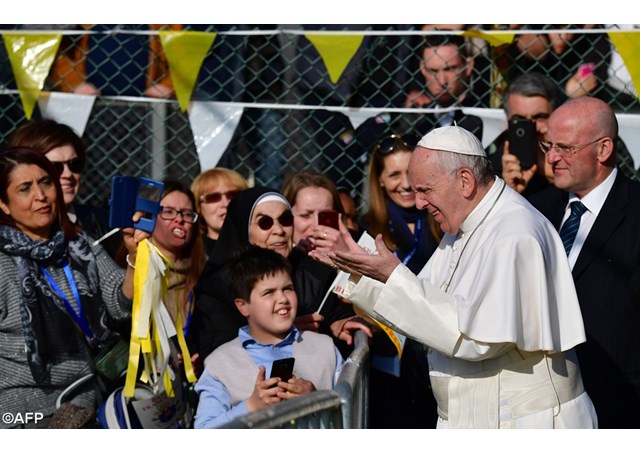
(Vatican Radio) Pope Francis visited the Roman parish of St. Magdalene of Canossa on Sunday afternoon.
The schedule released by the Vatican ahead of the visit included time with the children and young adolescents of the parish in their sports field, a meeting in the parish theatre with parents and newborns baptized during the course of the past year, a visit with the elderly and sick of the parish in the parish hall, and an encounter with parishioners active in faith formation and pastoral outreach, time for the Sacrament of Penance, and Mass in the parish church.
St. Magdalene of Canossa was born into a prominent Veronese family in the middle of the second half of the 18th century. She used her family’s considerable wealth to serve and advocate on behalf of the poor of her city, eventually founding the Congregation of the Daughters of Charity, Servants of the Poor.
Click below to hear our report
|
|
|
|
Rispondi |
Messaggio 21 di 33 di questo argomento |
|
|
|
|
Rispondi |
Messaggio 22 di 33 di questo argomento |
|
Pope points to Mary Magdalene as an apostle of hope
Pope Francis during his May 10, 2017 Wednesday general audience. | Elise Harris/CNA.
Vatican City, May 17, 2017 / 02:36 am
By calling Mary Magdalene by name after his resurrection, Jesus shows us just how personal his relationship with mankind is, Pope Francis said Wednesday, adding that after this intimate encounter, Mary then becomes an apostle of hope for the world, announcing the Lord's rising.
"Mary: the revolution of her life, the revolution destined to transform the existence of every man and woman, begins with a name that echoes in the garden of the empty tomb," the Pope said May 17.
"How beautiful to think that the first appearance of the Risen One took place in such a personal way! That there is someone who knows us, who sees our suffering and delusion, who is moved by us, and who call us by name," he said.
After finally realizing who is speaking to her, Mary would like to run and embrace Jesus, but "he is by now oriented to the heavenly Father, while she is invited to bring the announcement to her brothers."
"So that woman, who is the first to encounter Jesus...now has become an apostle of the new and greatest hope," he said.
Pope Francis spoke to pilgrims present in St. Peter's Square for his weekly general audience. He continued his catechesis on the virtue of Christian hope, focusing on the figure of Mary Magdalene at the tomb.
Mary was the first to arrive at the tomb, he said, noting that she is "one of the disciples who accompanied Jesus from Galilee, putting herself at the service of the early Church."
The Gospel, he said, describes Mary as "a woman of easy enthusiasm," who after seeing the empty tomb runs back to the apostles disappointed by what she saw.
Her first hypothesis that Jesus' body had been taken was "the simplest she could formulate," Francis said, explaining that her first announcement "is not that of the Resurrection, but of an unknown theft, perpetrated while all of Jerusalem slept."
Then, when she returned to the tomb a second time, her steps are "slow and heavy," as she is now suffering not only from the death of Jesus, but also because of the inexplicable disappearance of his body.
However, while she is bent over his grave in tears, "God surprises her in the most unexpected way," the Pope said, noting how the Gospel underlines "how persistent her blindness is," since she not only didn't notice the presence of two angels questioning her, but neither does she recognize Jesus, mistaking him for the gardener.
"Instead, she discovers the most shocking event in human history when finally he calls her by name," Pope Francis said, adding that this personal interest in humanity is something "that we find carved in many pages of the Gospel."
"Around Jesus there are many people who look for God; but the most marvelous reality is that, long before, there is above all God who is concerned about our lives, who wants to uplift, and to do this calls us by name, recognizing the personal face of each person," he said.
The Pope stressed that every person has a story of love that God writes for them on earth, calling each one by name.
"He knows us by name, he watches over us, he waits for us, he forgives us, he is patient with us. True or not true?" Francis said, saying "each one of us has this experience."
Pointing to the joy Mary felt after discovering Jesus had indeed risen from the dead, the Pope said it's a happiness that isn't given in small drops, but is rather "a waterfall" that envelops our entire lives.
"The Christian existence is not woven on fluffy happiness, but on waves that engulf everyone," he said, and encouraged the crowd to place themselves in the Gospel scene, "with the bags of disappointments and defeats that each one carries in their heart."
In that instant, he said, "there is a God close to us who calls us by name and says: 'Rise, cease your tears, because I have come to free you!'"
Jesus, he said, is not someone who adapts to the world, tolerating the death, sadness, hatred and the moral destruction of people. Rather, "our God is not inert, but dreams of the transformation of the world, and he realized it in the mystery of the Resurrection," he said.
Turning to Mary Magdalene, Francis said her example is one of hope, and that her intercession helps us to live the experience of the Resurrection, because "at the time of tears and abandonment, she hears the Risen Jesus who calls us by name, and with a heart full of joy goes to announce: I have seen the Lord!"
This isn't the first time the Pope has drawn attention to the importance of Mary Magdalene. Just last year, in June 2016, Francis signed a decree bumping the liturgical celebration honoring the Saint from a memorial to a feast, putting her on par with the apostles.
On the Church's liturgical calendar, saints are honored with a "memorial," a "feast," or a "solemnity." Solemnities rank the highest, with feasts coming in second and memorials in third.
While there are 15 other memorials on Mary Magdalene's July 22 feast, hers was the only obligatory one to celebrate. After being elevated to the level of a feast, the celebration bears a more significant weight.
|
|
|
|
|
|
|
Rispondi |
Messaggio 23 di 33 di questo argomento |
|
UN demands Vatican compensate Magdalene laundry victims
Pope Francis must launch an investigation into decades of abuse of girls and young women at Magdalene laundries, the United Nations has demanded.

WED, 05 FEB, 2014 - 17:35
Pope Francis must launch an investigation into decades of abuse of girls and young women at Magdalene laundries, the United Nations has demanded.
It has also called for religious orders involved or the Vatican itself to pay compensation to survivors and families of victims of the notorious Catholic-run workhouses.
In a scathing attack on the Catholic Church’s attitude to widescale sex abuse and torture meted out by its own priests and nuns, the UN human rights committee has also urged the Holy See to open its files on paedophiles and bishops who concealed their crimes.
Referring specifically to the Magdalene laundries scandal – recalled most recently in the Oscar-nominated film 'Philomena' – the Vatican is accused of taking no action to investigate the abuse.
Nor did church authorities compel nuns who ran the workhouses to cooperate with police inquiries into those who organised and knowingly profited from unpaid work by girls incarcerated in the laundries, it said.
The UN Committee on the Rights of the Child (CRC) said it was particularly concerned that:
* Girls placed in the institutions were forced to work in slavery-like conditions and were often subject to inhuman, cruel and degrading treatment as well as to physical and sexual abuse;
* They were deprived of their identity, of education and often of food and essential medicines and were imposed with an obligation of silence and prohibited from having any contact with the outside world;
* And unmarried girls who gave birth before entering or while incarcerated in the laundries had their babies forcibly removed from them.
The laundries – institutions for single mothers detained through the courts or often moved in by their family or clergy for being sexually active – were run by four Catholic religious orders: The Sisters of Mercy, The Sisters of Our Lady of Charity, The Sisters of Charity, and The Good Shepherd Sisters.
The last laundry, at Sean McDermott Street in Dublin, closed in 1996.
It is not the first time they have been highlighted by the UN. In 2011, the UN Committee Against Torture said it was gravely concerned by the failure of the Irish State to “protect girls and women who were involuntarily confined between 1922 and 1996 in the Magdalene Laundries”.
Since then, the Government has set up a State compensation scheme for survivors.
Several hundred women who have applied to the redress fund are to be paid tax-free sums, ranging from €11,500 to €100,000.
But the Magdalene Survivors Together group, which represents survivors in Ireland and the UK, has criticised religious orders for not contributing to the compensation.
The UN said the Catholic orders which ran the workhouses came under the authority of the Pope, who should launch an internal investigation into religious personnel working in the laundries and ensure those responsible are reported to authorities for prosecution.
The watchdog also called for full compensation to be paid to the victims and their families either through the congregations themselves or through the Holy See “as supreme power of the Church and legally responsible for its subordinates”.
The UN committee demanded the Catholic church takes responsibility for the physical and psychological recovery of survivors.
Campaigners Justice For Magdalenes said the report points out that the Catholic church refused to accept unanimous survivor testimony that they were imprisoned and subjected to forced labour, torture as well as other cruel, inhuman or degrading treatment.
“None of the orders have offered an apology to Magdalene survivors, nor have they contributed to the compensation fund,” the group said in a statement.
“The Catholic church has not made any attempt to instigate an internal investigation into Magdalene abuse, nor has it held anyone accountable for what happened.
The UN watchdog has also accused the Vatican of systematically adopting policies that allowed priests to rape and molest tens of thousands of children worldwide over decades.
The findings were published after the Holy See was hauled before a day-long interrogation last month on its implementation of the UN Convention on the Rights of the Child.
The UN blasted what it branded a “code of silence” used to keep victims quiet and attacked the Vatican for putting the reputation of the church and alleged offenders over the protection of children.
“The committee is gravely concerned that the Holy See has not acknowledged the extent of the crimes committed, has not taken the necessary measures to address cases of child sexual abuse and to protect children, and has adopted policies and practices which have led to the continuation of the abuse by, and the impunity of, the perpetrators,” it said.
|
|
|
|
Rispondi |
Messaggio 24 di 33 di questo argomento |
|
Pope Francis arrives to Brazil's warm embrace
Malta IndependentMonday, 22 July 2013, 21:54Last update: about 12 years ago
Pope Francis returned Monday to the warm embrace of Latin America, landing in Brazil to begin his first international trip as pontiff.
Brazilian President Dilma Rousseff waited on the tarmac for the pontiff to step down the stairs from the no frills commercial airliner that was specially booked for him.
It was the first time the Argentine-born Francis had returned to his home continent since his selection as pope in March.
Earlier on the flight from Rome, Francis expressed concern for a generation of youth growing up jobless as the world economy sputters.
The message should resonate with the young people in the mammoth crowds expected at a papal Mass on Rio's Copacabana beach and other ceremonies during Francis' seven days in Brazil, the world's most populous Roman Catholic nation.
During his stay, the 76-year-old Argentine-born pontiff will meet with legions of young Catholics converging for the church's World Youth Festival in Rio, a seaside Sin city better known for hedonistic excess. More than 1 million people are expected to pack the white sands of Copacabana for the Mass celebrated by Francis. He will also visit a tiny chapel in a trash-strewn slum, and make a side trip to venerate Brazil's patron saint, Our Lady of Aparecida.
The pontiff is expected to arrive in Rio de Janeiro at 3 p.m. EDT (1900 GMT) Monday.
During his flight from Rome, Francis warned about youth unemployment in some countries in the double digits, telling about 70 journalists aboard the papal plane that there is a "risk of having a generation that hasn't worked." He said, "Young people at this moment are in crisis."
He didn't specify any country or region, but much of Europe is seeing those gloomy youth joblessness numbers, especially in Greece, Spain and Italy. Brazil is in far better shape than European nations, with unemployment at an all-time low after a decade of economic expansion.
"I'm here for faith! I'm here for joy! And I'm here for the first Latino pope!" Ismael Diaz, a 27-year-old pilgrim wrapped in the flag of his native Paraguay, said as he bounded down the stone sidewalks of Copacabana hours ahead of Francis' arrival.
Diaz gave high fives to four fellow pilgrims, then turned toward local beachgoers who looked back at him while calmly sipping green coconut water and staring from behind dark sunglasses.
"I'm here because I have the force of God in me and want to make disciples of all. Arghhhhhhhhhh!" he yelled, lifting his head and howling into Rio's hot, humid air before flexing his arms and striking a bodybuilder's pose.
Alex Augusto, a 22-year-old seminarian dressed in the bright green official T-shirt for pilgrims, said Monday that he and five friends made the journey from Brazil's Sao Paulo state to "show that contrary to popular belief, the church isn't only made up of older people, it's full of young people. We want to show the real image of the church."
It would be easy for Francis if all Catholics shared the fervor of some of its younger members. But Diaz, Augusto and their fellow pilgrims are the exception in Brazil and much of Latin America, a region with more faithful than any other in the world but where millions have left the church for rival Pentecostal evangelical churches or secularism.
A poll from the respected Datafolha group published Sunday in the newspaper Folha de S.Paulo said 57 percent of Brazilians age 16 and older call themselves Catholic, the lowest ever recorded. Six years ago, when Pope Benedict XVI visited, a poll by the same firm found 64 percent considered themselves among the faithful. In 1980, when Pope John Paul II became the first pontiff to visit Brazil, 89 percent listed themselves as Catholics, according to that year's census.
Pentecostal evangelicals stood at 19 percent of the population in the latest poll, rising from virtually nothing three decades ago by aggressively proselytizing in Brazil's slums.
There is also a huge gap in the level of participation in the different churches, a fervor factor that deeply troubles the Catholic Church. The Datafolha poll said 63 percent of Pentecostal evangelicals report going to church at least once a week, while only 28 percent of Catholics say they attend Mass weekly.
Datafolha interviewed 3,758 people across Brazil on June 6-7 and said the poll had a margin error of 2 percentage points.
During his flight to Brazil, Francis also expressed concern about the elderly, saying older people should not be isolated or "thrown away ... as if they had nothing to offer us."
"A people has a future if it goes forward with bridges: with the young people having the strength to bring it forward and the elderly because they have the wisdom of life," the pope said. The elderly have "the wisdom of history, the wisdom of a nation, the wisdom of a family, and we need this."
Francis has spoken often of the need for humility in the church, and he kept to that message Monday; the pope carried his own black hand luggage as he boarded a special Alitalia flight from Rome.
"Every pope is different, and Pope Francis is showing himself to be extremely charismatic, with a language that is simple and direct," Sao Paulo Cardinal Odilo Scherer said.
Playing out alongside the papal visit is political unrest in Brazil, where widespread anti-government protests that began last month have continued and are expected to occur outside Rio's Guanabara Palace, the seat of state power where Francis is to meet with Rousseff later in the evening.
With the exception of gay rights groups and others angered by the church's doctrine against abortion and same-sex marriages, the target of most protesters won't be Francis but the government and political corruption. The pontiff is said to support Brazilians peacefully taking to the streets, and when he was a cardinal in Buenos Aires he didn't shy from conflict with Argentina's leaders as he railed against corruption.
When Francis talks with Rousseff, they are likely to focus on the poor. Upon taking office, the Brazilian leader declared that eradicating extreme poverty was her top goal as president, and she has expanded a network of social welfare programs that have helped lift almost 30 million Brazilians out of poverty in the last decade.
"Unlike his predecessors, who had a theoretical understanding, Francis has a pastoral understanding honed by living and working in working-class neighborhoods of Buenos Aires," said Joseph Palacios, a sociologist at Georgetown University and former Catholic priest who has studied the church.
That's evident to Maria Nascimento, a 60-year-old Catholic living in the Varginha slum that Francis will visit this week.
"God chose wisely when he decided to send this humble man to lead the church," she said, standing in her kitchen where photos of grandchildren's baptisms were stuck to her refrigerator with magnets.
"There's going to be a huge impact on Brazil after he has come and left, after his feet have walked these streets in our slum. He's going to help the church in Brazil, the love here for him is growing so fast."
https://www.independent.com.mt/articles/2013-07-22/world-news/Pope-Francis-arrives-to-Brazil's-warm-embrace-2141880320 |
|
|
|
Rispondi |
Messaggio 25 di 33 di questo argomento |
|
Capilla de Santa María Magdalena (Ciudad de México)
La Capilla de Santa María Magdalena es un templo católico ubicado en el Centro histórico de la Ciudad de México, en la alcaldía Cuahtémoc. Originalmente estuvo anexa al recogimiento de Santa María Magdalena, institución fundada en 1692 y fue construida de 1805 a 1808, como parte del proyecto de reconstrucción del recogimiento. Actualmente se utiliza como bodega de la dirección de la reforma agraria1
La real sala del crimen fue creada en 1568 como una dependencia de la Real Audiencia de México. su función era la administración y aplicación de la justicia en la totalidad del reino.2 Durante los dos primeros siglos del periodo virreinal la real sala del crimen contó con instalaciones muy reducidas para las mujeres que delinquían y por lo general eran enviadas a casas de carácter religioso o privadas donde frecuentemente eran sometidas a trabajos forzados.2
En 1692 se fundó en la ciudad el primer recogimiento para reclusión de mujeres, utilizando el modelo de España, donde se desarrollaron los recogimientos como instituciones que tenían como fin al re encauzamiento de las reclusas, en lugar del simple castigo encerrándolas en cárceles o galeras. El proyecto estuvo a cargo de Francisco de Zaraza y Arce, alcalde de la sala del crimen y el arzobispo de México Francisco de Aguiar y Seijas. El recogimiento fue fundado en una casa del barrio indígena de San Lucas que pertenecía a los Mercedarios y dedicado a María Magdalena.2 Ahí fueron trasladadas las mujeres que se encontraban en la sección de reclusas del Hospital de la Misericordia.3 En el recogimiento eran recluidas las mujeres que cometían delitos como prostitución, homicidio robo, escándalo en la vía pública por ebriedad, sacrilegio y lesiones.1
A principios del siglo xix el recogimiento se encontraba sin medios para funcionar y en un estado ruinoso, por lo que fue necesario re edificarlo. La obra fue financiada por los inquisidores del tribunal del santo oficio ya que el gobierno carecía de fondos para realizarla1 y fue llevada a cabo de 1805 a 1808 por José Antonio González Velázquez, director de la Academia de San Carlos y su sobrestante José Antonio de Zúñiga quien se encargó del acopio de los materiales necesarios y de la contratación de la mano de obra requerida.1
El nuevo edificio fue dedicado el 14 de marzo de 1808 en una ceremonia donde acudieron el virrey Iturrigaray, autoridades del tribunal de la inquisición, el cura de la parroquia de San Miguel y el arquitecto Ignacio Castera. La capilla fue dedicada 5 días después.1
El recogimiento funcionó hasta 1812, cuando el virrey Francisco Xavier Venegas ordenó desocupar el edificio para albergar a los presidiarios que construían el proyecto de la zanja cuadrada,2 que tenía como finalidad el resguardo de la ciudad. En 1815 fueron trasladadas al hospital de San Antonio Abad, que se encontraba vacío y la casa de las recogidas fue convertida en caballerizas2
En 1833 el edificio es reparado y adaptado para ser la sede del Colegio Militar. En 1835 el ayuntamiento dispuso la entrega de las instalaciones al colegio,4 el cual lo ocupó hasta 1841, cuando fue trasladado al Castillo de Chapultepec.
En 1863 durante la Segundo Imperio Mexicano el edificio fue transformado en el hospital militar del imperio, el cual fue conocido como el hospital de san Lucas.5 Para 1867, una vez restaurada la República, el presidente Benito Juárez nombró al destacado coronel médico cirujano Francisco Montes de Oca, director del Hospital Militar, puesto que ocupó hasta su muerte en 1885.5 Durante este periodo La capilla de Santa Magdalena fue utilizada como anfiteatro del hospital militar.2
Al respecto del uso de la capilla como anfiteatro del hospital, el científico y escritor Manuel Rivera Cambas escribió:
...El anfiteatro está formado por un perfecto octágono, la cúpula sostenida por columnas, las ventanas superiores sin cristales y enrejada la parte inferior para buscar la mejor ventilación. Las paredes aparecen adornadas con los nombres de los mas famosos médicos antiguos y modernos; en el centro de la estancia hay dos planchas de madera, giratorias, forradas con zinc y de trecho en trecho mesas encubiertas del mismo metal para colocar las piezas; el pavimento es de mármol. 6
|
|
|
|
Rispondi |
Messaggio 26 di 33 di questo argomento |
|
Pope Francis has spoken about Mary Magdalene and visited Mexico, where he prayed before the Virgin of Guadalupe and in a dangerous city.
- In 2016, Pope Francis declared July 22 as a feast day for Mary Magdalene. This made her liturgical celebrations equal to those of the male apostles.
- In February 2025, Pope Francis spoke about the conversion of Mary Magdalene and asked people to consider their "place" and "mission".
- Pope Francis visited Mexico City's Basilica of Guadalupe and prayed before the Virgin of Guadalupe.
- He also visited a dangerous city in Mexico, where he spoke out against crime and violence against women.
- In 2016, Pope Francis prayed before the Altar of Forgiveness in Mexico City's Cathedral.
The Virgin of Guadalupe is a national icon of Mexico. She is depicted with brown skin and straight black hair. Her shrine in Mexico City is one of the most popular religious sites in the world.
|
|
|
|
Rispondi |
Messaggio 27 di 33 di questo argomento |
|
San Miguel Ecatepec
San Miguel Ecatepec es una comunidad con categoría de agencia municipal perteneciente a Tequisistlán y al Distrito de Tehuantepec, en el Estado de Oaxaca. Siendo la segunda localidad más poblada del municipio, solo por detrás de la cabecera municipal.2
 Iglesia de San Miguel Ecatepec, Tequisistlán
La localidad se encuentra a 30 km al sureste de la cabecera municipal sobre una brecha de carretera. Se ubican en las coordenadas geográficas:  16°15′37.8″N 95°45′28.1″O.3 16°15′37.8″N 95°45′28.1″O.3
|
|
|
|
Rispondi |
Messaggio 28 di 33 di questo argomento |
|
New Year's Prophecy - Part 2
Game of Thrones at the End of Time
By Goro Adachi
January 3, 2017
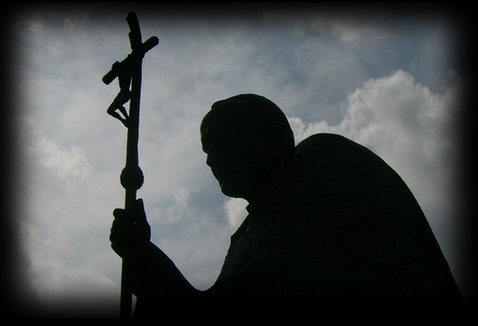
A big shift is coming, it seems. Our pattern projection was quickly followed by a pattern fulfillment, spawning glimpses of the future in the process as anticipated by " New Year's Prophecy". What's coming, as far as we can tell, is a dramatic tectonic shift in time... 
This New Year's Eve/Day Impact in the form of an Istanbul nightclub terror attack by ISIS came with all the hallmarks identified in New Year's Prophecy (Part 1, posted Dec 30), i.e. Sirius, Rio time code, etc... with ominous implications for the new year: 
- Sirius = New Year's star (culmination at ~midnight/start of Jan 1)
- Istanbul nightclub terror attack on New Year's Eve/Day (1 hr 15 min after midnight local time)
- Sirius = Isis (per ancient Egyptian tradition)
- Istanbul nightclub attack by ISIS
- Isis = "Queen of Heaven" (per tradition)
- Istanbul nightclub named "Reina" meaning "Queen"
- Rio = "New year's city" via ~Jan 1 solar alignment (lat/dec); same alignment also on ~Dec 10 (plus temporal context of 2016 = year of Rio Olympics)
- Jan 1, 2017: Istanbul terror attack (nightclub)
- Dec 10, 2016: Istanbul terror attack (soccer stadium)
It is the geographical focus on Istanbul in particular that exhibits the strongest qualities of being the New Year's crystal ball. This has to do with the papal/Church/Christianity theme highlighted in Part 1... Istanbul used to be called Constantinople after Constantine the Great (AD 272-337) who founded the capital city of the Roman Empire. Constantine played a pivotal role in making Christianity the powerful, dominant religion that it is today. " Constantinian Shift", as it is sometimes called, ensured not only the survival but also the dominance of Christianity over pagan religions including ancient Egyptian cults.

By becoming the first Christian Roman emperor, Constantine initiated the marriage between the Roman Empire and Christianity, in effect creating a "Christian Empire". In 313 he and Licinius decriminalized Christianity with the Edict of Milan; in 325 he convened the first Council of Nicaea to establish the first uniform Christian doctrine/orthodoxy ("Nicene Creed"), officially declaring what Christianity is/should be; in 380 under Roman Emperor Theodosius I Christianity officially became the state religion of the Roman Empire; in 391, Theodosius I issued a decree outlawing ancient cults; in the early 400s the ancient Egyptian temple on the Philae island was the last to be converted into a church. Christianity engulfed the ancient Egyptian magical "religion". Isis was one of the most prominent deities in the ancient Egyptian "religion", making it highly meaningful that we saw Istanbul/ Constantinople juxtaposed with ISIS in the New Year's terror attack. Add to it our Rio de Janeiro " Janus" context, i.e. the god of the beginning and ending, we definitely get this theme of the end of the Egyptian religion and the beginning of the Roman Christianity, geographically and historically interfacing at Istanbul/Constantinople. Also pertinent to this is the back-to-back, daughter-mother double death event/signal that we were sad to see right after Christmas (the biggest Christian holiday)...
Carrie Fisher's last name has a very Christian connotation:
The phrase "fishers of men," also at Mark 1:17, is one of the most well known lines in the entire New Testament, and the most important metaphor for evangelism. The image probably had an important role in the adoption of the Ichthys as a symbol of early Christianity. The reference has also often been moved from the disciples to Jesus, with him being called the "fisher of men," and the image of Jesus as a fisherman is second only to that of Jesus as a shepherd.
Fisher was also Princess Leia in Star Wars which makes her mother Debbie Reynolds analogous to a " queen", ominously resonating with the nightclub Reina - meaning " Queen" - attacked in Istanbul attacked on New Year's Day. On Christmas Day itself was another major death of an icon - George Michael. One of his well known songs was Last Christmas...
...and his most successful album - winning the Grammy Awards for Album of the Year in 1989 - was called Faith (1987). So we continue to see this combination of Christianity and " ending" ("last") together, evoking the 2012 poster ( Rio Jesus statue) we highlighted previously.
Put it all together, the overall message could potentially be (though not exclusively so) something to the effect of " the end of the Age of the Church/Christianity/Roman Empire or Age of Pisces", and perhaps concurrently the resurrection of the ancient Egyptian/Gnostic/Hermetic tradition/philosophy which was forced to go underground by the combined forces of the Church and the Roman Empire. Remember, the key idea behind "New Year's Prophecy" was that we would have a significant event(s) around New Year's Eve/Day, likely related to Sirius, the papacy, as well as the Russia-US cyberwar situation. That it would be a major foreshadowing of what's to come in 2017 and potentially beyond. We are now indeed getting glimpses of the potential future assuming we are on the right track, which we should be based on the accuracy level of our projection so far. Even the Russian cyberwar pattern manifested vividly on New Year's Eve in the form of big news headlines claiming Russian cyber hacking of Vermont's electric utility: 
It's tempting to try to combine the potentially prophetic themes we have going...
- Papacy/Church (ending?)
- Queen ISIS
- Russia-US relations, cyber warfare
For example, we can imagine a scenario in which ISIS assassinates the Pope, or one that has Queen Elizabeth II dying or stepping down like Pope Benedict XVI did back in 2013. As for Russia, the new Cold War-like situation may be something unfolding in the "background" throughout the near. But the most intriguing and central in the whole pattern is the "end of the papacy/Church/Christianity" storyline. Ominously it goes well with curiously accurate St. Malachy's papal prophecy...
The Prophecy of the Popes is a series of 112 short, cryptic phrases in Latin which purport to predict the Roman Catholic popes (along with a few antipopes), beginning with Pope Celestine II. The alleged prophecies were first published by Benedictine monk Arnold Wion in 1595. Wion attributes the prophecies to Saint Malachy, a 12th-century Archbishop of Armagh, Ireland.
According to the prophecy, Pope Francis would correspond to the final pope on the list called " Peter the Roman". (This correspondence is not certain as there is some ambiguity at the end of the pope list, but Francis would definitely be one the final popes.)
Pope Benedict XVI was #111 on the list with the motto "Glory of the Olive". It is then followed by a set of sentences - not just a short motto, but two paragraphs - describing the next/final pope or the next two (or more) final popes...
In persecutione extrema S.R.E. sedebit.
Petrus Romanus, qui pascet oves in multis tribulationibus,
quibus transactis civitas septicollis diruetur,
& judex tremedus judicabit populum suum. Finis.
In the extreme persecution of the Holy Roman Church,
there will sit.
Peter the Roman, who will pasture his sheep in many tribulations,
and when these things are finished, the city of seven hills [i.e. Rome] will be destroyed, and the terrible judge will judge his people.
The End.
They clearly describe the end of the Roman Catholic Church, the end of Rome. And it sounds as if this great destruction would come after the reign of "Peter the Roman". That would mean after Pope Francis. If we are in fact getting a multicontextual foreshadowing of 2017 signaling a situation very similar to St. Malachy's "Peter the Roman" prophecy, that would imply the exit of Pope Francis within a year or so, followed by the Fall of the Church and with it the Age of Pisces (Fish). Of course, the big question is, is Pope Francis really Peter the Roman? No way to be sure obviously. But there are intriguing hints. Remember the "sign in the sky" at the time of Pope Benedict's resignation (2013) which also produced a geo-alignment pinpointing Rio (discussed in Part 1)?
Feb 11, 2013: Pope Benedict XVI announces resignation
Feb 15, 2013: Major meteor impact in Chelyabinsk, Russia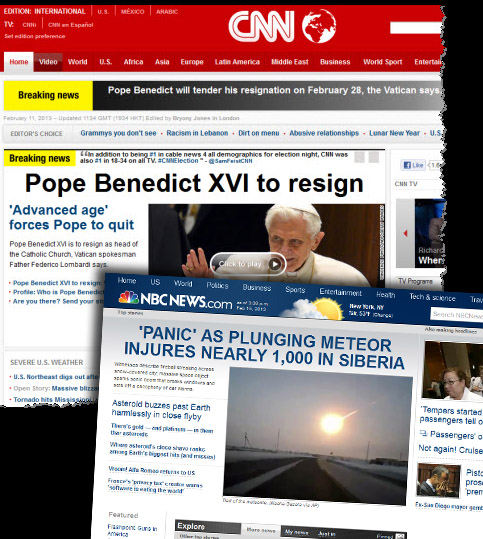 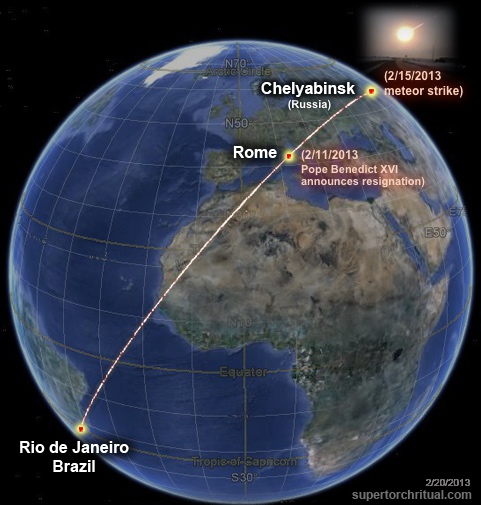
Note that " Peter" means " rock". Meteors are "rocks fallen from heaven". So the mid-February 2013 double impact event in effect telegraphed "(space) rock Rome" or " Peter the Roman"! And out of this "Peter the Roman" event came Pope Francis, introduced to the world on March 13, 2013.

As discussed in Part 1 the very first foreign land he officially visited as the pope was... Rio de Janeiro.
It gets even more interesting. Pope Francis's arrival in Rio on January 22, 2013 precisely coincided with the birth of Prince William and Kate's royal baby Prince George. who is Queen Elizabeth II's great grand child.
Remember, the New Year's terror attack in Istanbul/ Constantinople - the "birthplace" of the Roman Catholic Church - involved a nightclub called " Queen" ( Reina). A fascinating Pope-Queen entanglement. Or... a " father-mother" entanglement. After the exit of Queen Elizabeth II, the line of succession will be:
- Prince Charles
- Prince William
- Prince George (William's baby)
It just so happens that Pope Francis's real name is also "George". (Full name: Jorge Mario Bergoglio.) And George Michael just died on Christmas, the biggest Christian holiday mere days before New Year's Day.
Perhaps there is something special about Prince George? I talked extensively about the "Grail bloodline" symbolism surrounding the British royal family, particularly on the Diana side and Prince William, in my 2011 article "Lucifer's Destiny".
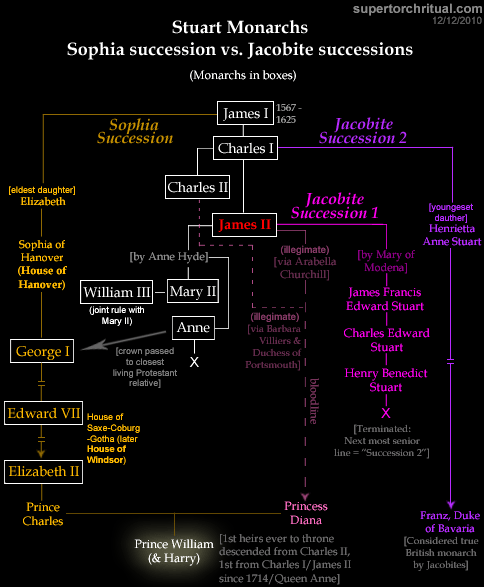
Perhaps this year (2017) the Pope and/or the Queen will die/exit which will trigger a chain reaction that leads to:
- the FALL of the Roman Catholic Church
- the RISE of the "Holy Grail" via British Royal Family after QE2
This duality would make a lot of multicontextual sense since the Holy Grail tradition has a lot - if not is all about - the Gnostic/Hermetic/Egyptian underground stream, the "religion" or philosophy (as well as bloodlines in some capacity) embodied in the figure of Isis, suppressed by the Roman Christianity which came into power via Constantin the Great. I'm not saying the bloodline of Princess Diana (Prince William, Prince George, etc.) has to be literally of the Holy Grail a la "The Da Vince Code", but even just a symbolic rise of "King Arthur" in this manner would be... well, symbolic of "Isis rising".
Isis is Sirius, and Sirius is "The Star", which is tarot card #17 as in 2017.
Perhaps it's no coincidence that the origin of the tarot could be traced back to underground stream tradition. We noted in Part 1 the cover of The Economist predicting 2017 world events displays the tarot, and the biggest political/geopolitical event coming in 2017 is a figure named "Trump" as in trump/tarot cards.
Plus, let's not forget that the musician Prince died on Queen Elizabeth II's birthday (April 21) last year.
It connects back to Rio as the Olympics there started on the day of a Regulus-Venus conjunction. Regulus, the heart of lion (Leo), is traditionally known as "prince" (or "little king").
The Rio Olympics ended on August 21 when Regulus was in conjunction with the Sun...
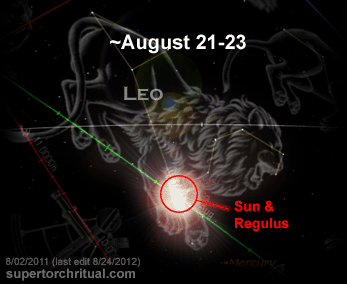
...coinciding with a deadly earthquake in central Italy near Rome where the Pope resides.
 Aug 23/24, 2016 Deadly earthquake rattles central Italy Aug 23/24, 2016 Deadly earthquake rattles central Italy
Aug 25 Italy quake death toll passes 240
These things are heavily interconnected. When there is this level of inter-contextual coherence, that's when you know there is a big hurricane forming and at some point it will strike. And when it does, it helps if we are prepared and mentally ready. (In some cases, we may even be able to prevent it.) Going multicontextual, as done in this New Year's Prophecy series, can be very valuable in this sense, helping us acquire a perspective unstuck in linear time. The torch is being passed from the Old World to the New World, a new age to rise out of the ashes of the old age like the phoenix. Mars is coming. An ending is always a new beginning, always together, like New Year's Eve and New Year's Day. Now face-to-face with this "Janus moment" in history, we can't help but be reminded of the old Chinese curse: "May you live in interesting times"...
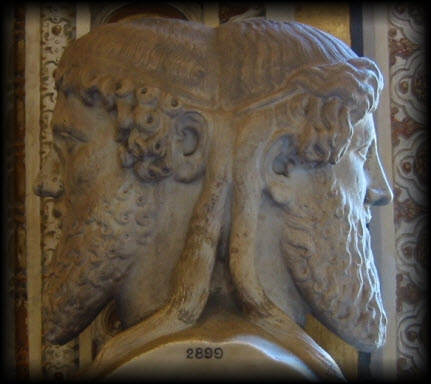
[P.S. There's much more going on right now than the issues discussed in this article. For example, I didn't even touch on the earth changes stuff that will... Well, like I said we're at a tipping point, the point of no return. Already being discussed on STRUG, if you're interested.]
https://www.goroadachi.com/etemenanki/newyears-prophecy-part2.html |
|
|
|
Rispondi |
Messaggio 29 di 33 di questo argomento |
|
|
Pope Francis died on April 21, 2025, the day after Easter, which coincided with Adolf Hitler's birthday and the alignment of Roman Catholic.
|
|
|
|
|
|
Pope Francis has died aged 88, a day after making a much hoped-for appearance at Saint Peter’s Square on Easter Sunday, the Vatican says in a statement.
HITLER S BIRTHDAY APRIL 20TH (EASTER SUNDY 2025)
|
|
|
|
|
|
Pope Francis has died aged 88, a day after making a much hoped-for appearance at Saint Peter’s Square on Easter Sunday, the Vatican says in a statement.
HITLER S BIRTHDAY APRIL 20TH (EASTER SUNDAY 2025)
|
|
|
|
|
EASTER SUNDAY
Mary Magdalene, seeing that the stone of the tomb had been rolled away, ran to tell Peter and John. After receiving the shocking news, the two disciples also went out and — as the Gospel says — “the two were running together” (Jn 20:4). The main figures of the Easter narratives all ran! On the one hand, “running” could express the concern that the Lord’s body had been taken away; but, on the other hand, the haste of Mary Magdalene, Peter and John expresses the desire, the yearning of the heart, the inner attitude of those who set out to search for Jesus. He, in fact, has risen from the dead and therefore is no longer in the tomb. We must look for him elsewhere.
This is the message of Easter: we must look for him elsewhere. Christ is risen, he is alive! He is no longer a prisoner of death, he is no longer wrapped in the shroud, and therefore we cannot confine him to a fairy tale, we cannot make him a hero of the ancient world, or think of him as a statue in a museum! On the contrary, we must look for him and this is why we cannot remain stationary. We must take action, set out to look for him: look for him in life, look for him in the faces of our brothers and sisters, look for him in everyday business, look for him everywhere except in the tomb.
We must look for him without ceasing. Because if he has risen from the dead, then he is present everywhere, he dwells among us, he hides himself and reveals himself even today in the sisters and brothers we meet along the way, in the most ordinary and unpredictable situations of our lives. He is alive and is with us always, shedding the tears of those who suffer and adding to the beauty of life through the small acts of love carried out by each of us.
For this reason, our Easter faith, which opens us to the encounter with the risen Lord and prepares us to welcome him into our lives, is anything but a complacent settling into some sort of “religious reassurance.” On the contrary, Easter spurs us to action, to run like Mary Magdalene and the disciples; it invites us to have eyes that can “see beyond,” to perceive Jesus, the one who lives, as the God who reveals himself and makes himself present even today, who speaks to us, goes before us, surprises us. Like Mary Magdalene, every day we can experience losing the Lord, but every day we can also run to look for him again, with the certainty that he will allow himself to be found and will fill us with the light of his resurrection.
Brothers and sisters, this is the greatest hope of our life: we can live this poor, fragile and wounded existence clinging to Christ, because he has conquered death, he conquers our darkness and he will conquer the shadows of the world, to make us live with him in joy, forever. This is the goal towards which we press on, as the Apostle Paul says, forgetting what lies behind and straining forward to what lies ahead (cf. Phil 3:12-14). Like Mary Magdalene, Peter and John, we hasten to meet Christ.
The Jubilee invites us to renew the gift of hope within us, to surrender our sufferings and our concerns to hope, to share it with those whom we meet along our journey and to entrust to hope the future of our lives and the destiny of the human family. And so we cannot settle for the fleeting things of this world or give in to sadness; we must run, filled with joy. Let us run towards Jesus, let us rediscover the inestimable grace of being his friends. Let us allow his Word of life and truth to shine in our life. As the great theologian Henri de Lubac said, “It should be enough to understand this: Christianity is Christ. No, truly, there is nothing else but this. In Christ we have everything” (Les responsabilités doctrinales des catholiques dans le monde d'aujourd'hui, Paris 2010, 276).
And this “everything” that is the risen Christ opens our life to hope. He is alive, he still wants to renew our life today. To him, conqueror of sin and death, we want to say:
“Lord, on this feast day we ask you for this gift: that we too may be made new, so as to experience this eternal newness. Cleanse us, O God, from the sad dust of habit, tiredness and indifference; give us the joy of waking every morning with wonder, with eyes ready to see the new colours of this morning, unique and unlike any other. […] Everything is new, Lord, and nothing is the same, nothing is old” (A. Zarri, Quasi una preghiera).
Sisters, brothers, in the wonder of the Easter faith, carrying in our hearts every expectation of peace and liberation, we can say: with You, O Lord, everything is new. With you, everything begins again.
https://www.vatican.va/content/francesco/en/homilies/2025/documents/20250420-omelia-pasqua.html |
|
|
|
|
|
|
Rispondi |
Messaggio 30 di 33 di questo argomento |
|
SAINT MARY MAGDALENE
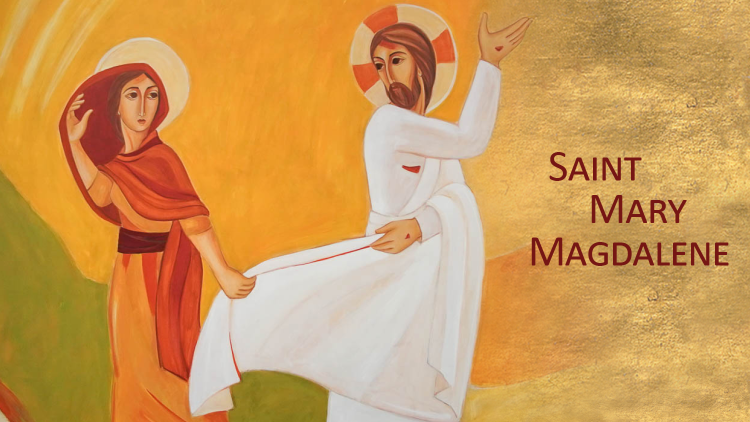 Saint Mary Magdalene Saint Mary Magdalene
The memorial of Saint Mary Magdalene was elevated to a Feast on 3 June 2016 by Pope Francis during the Jubilee of Mercy. We cite part of the decree: “The decision is situated in the current ecclesial context, which calls upon us to reflect more deeply on the dignity of women, the new evangelisation and the greatness of the mystery of divine mercy.”
On the first day of the week, Mary Magdalene came to the tomb early in the morning, while it was still dark, and saw the stone removed from the tomb. So she ran and went to Simon Peter and to the other disciple whom Jesus loved, and told them, “They have taken the Lord from the tomb, and we don’t know where they put him.” Mary stayed outside the tomb weeping. And as she wept, she bent over into the tomb and saw two angels in white sitting there, one at the head and one at the feet where the Body of Jesus had been. And they said to her, “Woman, why are you weeping?” She said to them, “They have taken my Lord, and I don’t know where they laid him.” When she had said this, she turned around and saw Jesus there, but did not know it was Jesus. Jesus said to her, “Woman, why are you weeping? Whom are you looking for?” She thought it was the gardener and said to him, “Sir, if you carried him away, tell me where you laid him, and I will take him.” Jesus said to her, “Mary!” She turned and said to him in Hebrew, “Rabbouni,” which means Teacher. Jesus said to her, “Stop holding on to me, for I have not yet ascended to the Father. But go to my brothers and tell them, ‘I am going to my Father and your Father, to my God and your God.’” Mary Magdalene went and announced to the disciples, “I have seen the Lord,” and then reported what he told her. (Jn. 20:1-2; .11-18)
Mary Magdalene and Saint John Paul II
It was Saint John Paul II who dedicated a lot of attention, not only to the importance of women in Christ’s and the Church’s very mission, but also with special emphasis, to the particular function of Mary Magdalene as the first witness who saw the Risen One and the first messenger who proclaimed the resurrection of the Lord to the Apostles (cf. Mulieris dignitatem, n. 16). The importance of women continues on in the Church today. It is manifested in the Church’s dedication to the new evangelization which seeks to welcome men and women, without distinction, from every race, people, language and nation (see Rev. 5:9), to proclaim the Good News of the Gospel of Jesus Christ, accompanying them on their earthly pilgrimage and offering them the wonders of God’s salvation. Saint Mary Magdalene is a true and authentic example of an evangelizer, that is, of an evangelizer who proclaims the joyful Easter message (see Collect for the Feast of Saint Mary Magdalene and the new preface).
Mary Magdalene and Pope Francis
Pope Francis made the decision to elevate the memorial of Saint Mary Magdalene precisely within the context of the Jubilee of Mercy to highlight the relevance of this woman who had such a great love for Christ and who was tremendously loved by Christ…. It is also of note that ecclesial tradition in the West, especially after Saint Gregory the Great, identified Mary Magdalene with the woman who washed Jesus’s feet with perfume in Simon the Pharisee’s house. This interpretation continued to influence western Church writers, and artists, as well as the liturgical texts connected with the Saint.
Mary Magdalene, first witness of the resurrection
We know that Mary Magdalene was a member of the group of Jesus’s disciples. She followed him even to the foot of the cross and to the garden where he was buried. Saint Gregory reminds us that she was the first testis divinae misericordiae (witness to divine mercy). The Gospel of John recounts that Mary Magdalene wept because she could not find the Lord’s body (see Jn. 20:11). Jesus had mercy on her, allowing her to recognize him as “Rabbouni”, thus transforming her tears into Easter joy.
On the one hand, she had the honor of being the prima testis (first witness) of the resurrection of the Lord, the first to see the empty tomb, and the first to hear the truth of his resurrection. Christ had a special consideration and mercy for this woman who showed such great love toward Him that she sought him anxiously in the garden with such suffering, with lacrimas humiltatis (humble tears), as Saint Anselm called them….
In addition, it is specifically in the garden of the resurrection that the Lord says to Mary Magdalene: “Do not hold on to me”. This is an invitation directed not only to Mary, but also to the entire Church, to enter into an experience of faith that surpasses any materialistic appropriation or human understanding of the divine mystery. It has an ecclesial scope! It is a good lesson for any disciple of Jesus not to seek human securities and worldly titles, but faith in the Living and Risen Christ!
Mary Magdalen, the first apostle
Precisely because she was an eyewitness of the Risen Christ, she was also the first to witness to Christ’s resurrection before the apostles. She fulfilled the mandate of the Risen One: “Go to my brothers and tell them…. Mary Magdalen went and announced to the disciples, ‘I have seen the Lord’ and then reported what he told her” (Jn. 20:17-18). In this way, she became, as already stated, an evangelizer, that is, a messenger who proclaims the good news of the resurrection of the Lord, or, as Rabanus Maurus and Saint Thomas Aquinas used to say, apostolorum apostola (apostle to the apostles) because she announced to the apostles what they, in their turn, would proclaim throughout the entire world. The Angelic Doctor was right in using this term, applying it to Mary Magdalene. She is the witness of the Risen Christ and announced the message of the resurrection, like the other Apostles.
https://www.vaticannews.va/en/liturgical-holidays/saint-mary-magdalene.html |
|
|
|
Rispondi |
Messaggio 31 di 33 di questo argomento |
|
BIENVENUE
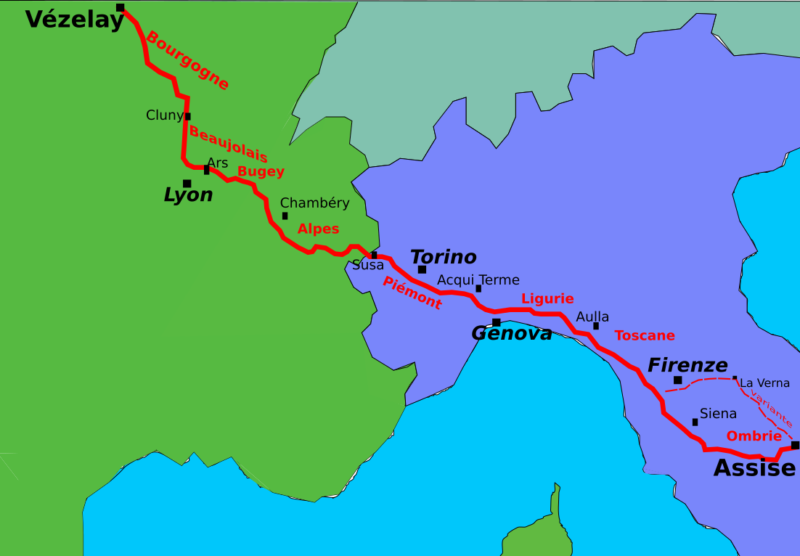
AVANT TOUTE CHOSE …
Nous sommes heureux de partager avec vous, amis pèlerins, la joie de la rencontre fraternelle ! Ce chemin se veut être une démarche de pèlerinage dans l’esprit de Saint François.
Accueillir la fraternité comme un cadeau, rechercher la simplicité et même la sobriété, vivre l’instant présent sans se soucier, c’est s’imprégner petit à petit de l’esprit de l’évangile tel que St François a choisi de le vivre. Le chemin est ouvert à toutes et tous et il apportera une joie authentique à celles et ceux qui auront au plus vrai d’eux-mêmes la paix du cœur.
Chemins de foi, chemins pour tous
Depuis de nombreux siècles, des pèlerins ont traversé l’Europe pour se rendre en Terre Sainte, à St Jacques de Compostelle, à Rome … pour des raisons spirituelles essentiellement mais ensuite aussi pour des raisons économiques et, plus récemment, pour goûter aux plaisirs de la marche, des paysages, du silence et de la solitude …
Aujourd’hui, de plus en plus de personnes, croyantes ou non, empruntent ces chemins tracés par les premiers pèlerins.
Un peu partout, des associations se sont créées pour redonner vie à ces itinéraires, notamment ceux vers Compostelle, mais aussi celui de Canterbury à Rome (« via francigena »), le Chemin de St-Michel, et bien d’autres. C’est aussi le cas pour ce « récent » chemin de 1500 km vers Assise.
Ainsi, elles témoignent d’un intérêt renouvelé pour la découverte du patrimoine culturel et artistique et pour une autre forme de ressourcement personnel ou de recherche d’épanouissement par un nouveau style de loisirs.
https://chemindassise.org/fr/accueil/ |
|
|
|
Rispondi |
Messaggio 32 di 33 di questo argomento |
|
We are also reminded of the fact that the same London phoenix already "gave birth" to not one but two major world figures via the Golden Ratio (phi)... Pope Francis and Prince George (William & Kate's baby).
It was a telling coincidence that the day the royal baby was born (July 22, 2013) was also the day Pope Francis arrived in Rio, Brazil (his first major trip overseas as pope). https://www.goroadachi.com/etemenanki/phoenix_storm.html
|
|
|
|
Rispondi |
Messaggio 33 di 33 di questo argomento |
|
That last brings to mind the Trojan Horse, in the Greek tradition called the "Wooden Horse"...
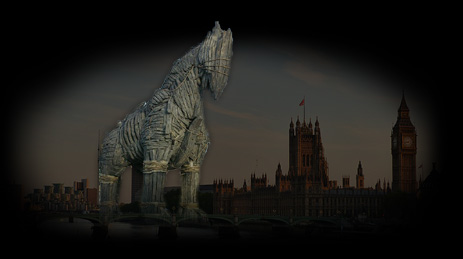
...of the Trojan War, ultimately started by the Golden Apple of Discord.

That's our super theme and we've been tracking it very closely for a few years now, especially this year when Venus has been in its Evening Star phase or Hesperus in Greek from which derives the name of the nymphs " Hesperides" who tend the garden in which golden apples are grown. The Evening Star will attain its maximum brightness in December 2013 (around Dec 8-11). A little later in the same month, there is going to be an Orange Alignment, which is our unique term for a Venus-Sun-Mercury alignment, a very reliable omen/time marker for a certain type of major world events including severe earth changes. In many languages, oranges are called "golden apples". Thus Orange Alignment = Golden Apple Alignment.
It will be a very special alignment this time indeed for various reasons. For one, it will coincide with the winter solstice, exactly one year after the "end" of the Mayan calendar. The winter solstice is also pinpointed by the latitude of two Brazilian cities Rio and (more precisely) Sao Paulo sitting on the Tropic of Capricorn marking the angle of the winter-solstice Sun reflected on the surface of the earth. 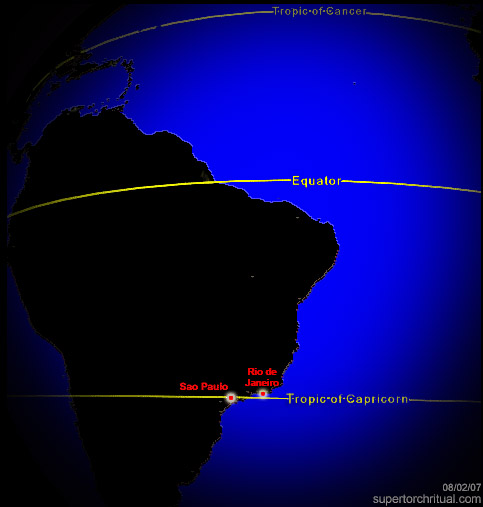 |
|
|
 Primo Primo
 Precedente
19 a 33 de 33
Successivo Precedente
19 a 33 de 33
Successivo
 Ultimo
Ultimo

|
|
| |
|
|
©2025 - Gabitos - Tutti i diritti riservati | |
|
|



















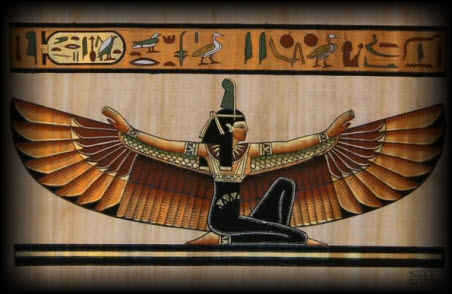
















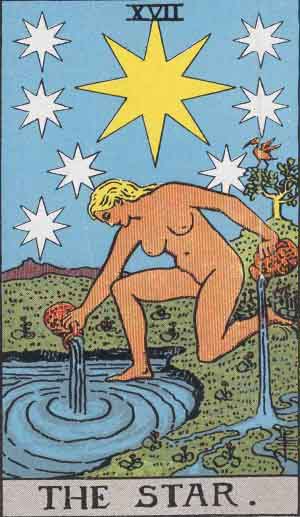
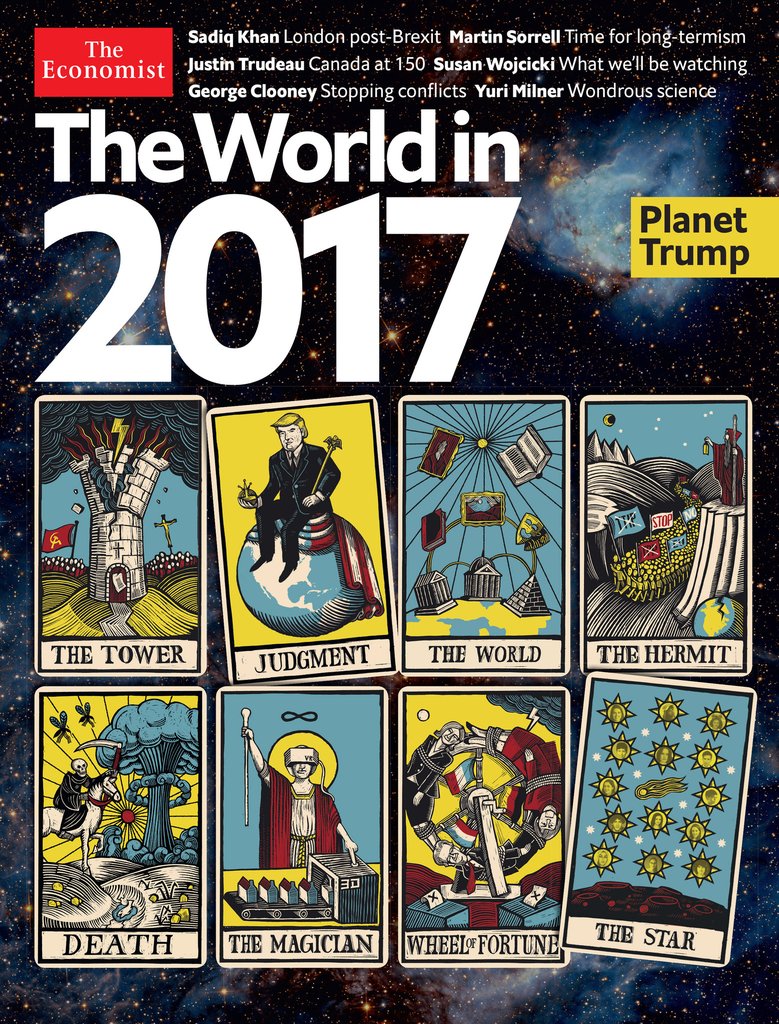
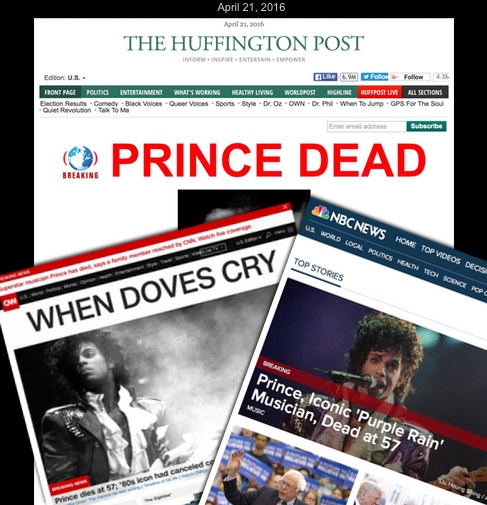
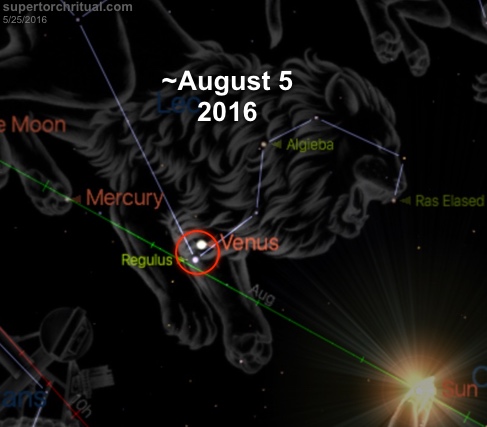


 Aug 23/24, 2016
Aug 23/24, 2016 







